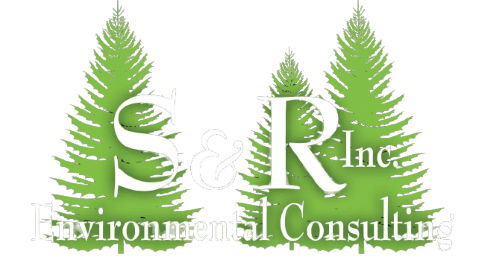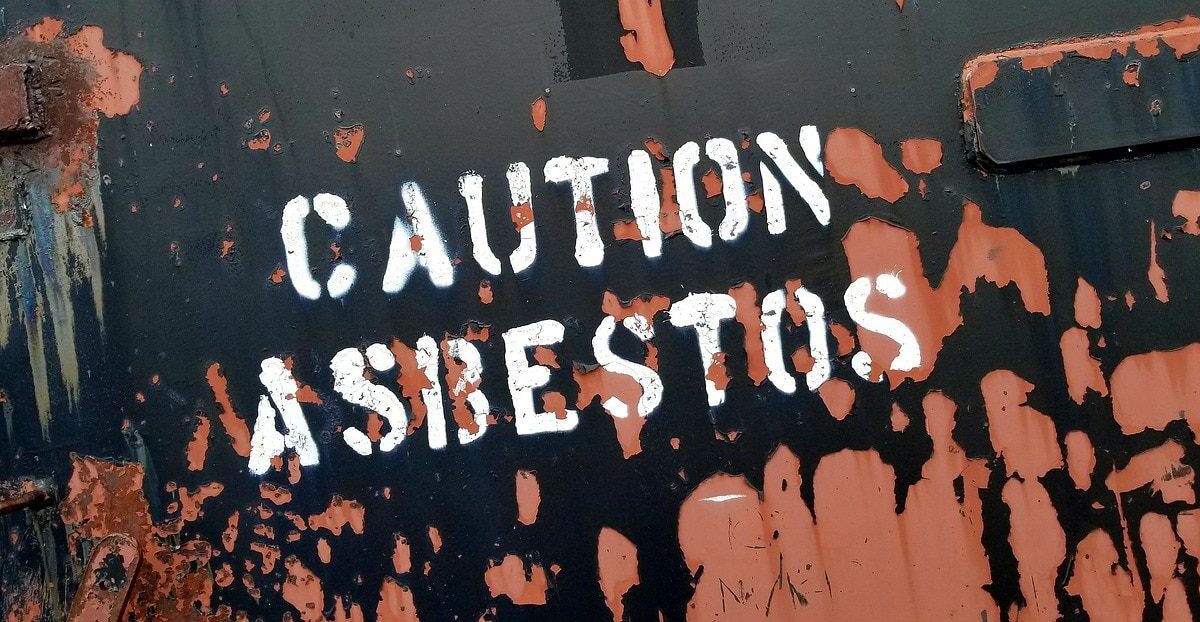


Signs of Black Mold in Air Vents & Should You Be Worried?
June 16, 2023


Lead Paint Testing: Why Is It Important?
October 9, 2023Asbestos is a group of naturally occurring minerals used to insulate, fireproof, and corrosion-proof buildings, construction sites, and ships. Unfortunately, it has also been known to cause serious health concerns if inhaled and lodged in the lungs – this can lead to asbestosis, i.e., a scarring of the lungs, lung cancer, or mesothelioma (cancer of the protective organ lining). Asbestos exposure leads to several chronic conditions, which, if left untreated, may become even fatal.
Regrettably, symptoms of asbestos-related diseases often don’t manifest until many years after exposure. Inhaling asbestos leads to the entry of tiny fibers into the air passages of the lungs, where they can travel deep and linger for extended periods. Although the body’s natural defenses may eliminate or expel some of these particles, others can evade these defenses and become lodged deep within the lungs, contributing to the development of asbestos-related health issues. Due to the delayed onset of symptoms, it is crucial to be cautious and vigilant about potential asbestos exposure to safeguard one’s health.
Asbestos is mostly found in various materials that are being used throughout construction. Its presence has been discovered in attic insulation, vinyl flooring tiles, adhesives, and roofing shingles. When renovations or structural repairs are necessary, asbestos inspection becomes essential. Contact S&R Environmental Consulting for asbestos testing in Denver and nearby regions to ensure your living area or premises are asbestos-free.
What is Asbestos?
Asbestos is a group of six naturally occurring fibrous silicate minerals composed of microscopic fibers. Its unique properties, such as resistance to heat and corrosion, have made it an invaluable material in building and construction. Asbestos possesses desirable characteristics like heat resistance, durability, and insulation capabilities, which have led to its extensive use in various industries, including construction and manufacturing. However, it is essential to note that asbestos can pose severe health risks when its fibers are inhaled, which is why its use has become increasingly regulated and controlled to protect human health and safety.
Given how harmful asbestos side effects are, it is banned in most countries globally. However, in some countries, like the USA, China, and India, it is still commonly employed in roofing, cement sheeting, pipes, fireproofing materials, automobile clutch and brake linings, and wallboard manufacturing applications. Asbestos exposure occurs most commonly in jobs that contain asbestos-containing materials and may involve activities such as demolition, insulation, innovation, and reparation.
Asbestos Exposure
There are six varieties of asbestos – Chrysotile Asbestos, Actinolite asbestos, Amosite asbestos, Anthophyllite asbestos, Crocidolite, and Tremolite asbestos – all posing a significant health risk if breathed in. The dangers of asbestos can be understood by the fact that the prolonged inhalation of asbestos fibers can lead to serious medical problems, including pleural effusions (fluid buildup between the chest wall and lung), lung cancer, asbestosis, and mesothelioma.
When asbestos products are damaged, disturbed, mishandled, or removed improperly, they release tiny fibers into the air. Those who work directly with asbestos are at the highest risk of asbestos-related diseases. However, anyone near potentially contaminated sites, such as former manufacturing plants or mines, could also be exposed. Once asbestos fibers are inhaled, they become lodged in the lung tissue and cannot be easily expelled, potentially causing inflammation, breathing issues, and eventually lung cancer or mesothelioma.
Asbestos Diseases
Inhalation of airborne asbestos fibers presents grave health hazards, as these microscopic particles can deeply penetrate the lungs, leading to lasting damage. Being a known carcinogen, any contact with asbestos increases the risk of serious diseases like lung cancer, mesothelioma, and asbestosis. Lung cancer and mesothelioma stand as the two primary illnesses associated with asbestos exposure. Additionally, individuals exposed to asbestos may also develop other cancers, such as larynx or ovarian cancer. Vigilance and precautionary measures are crucial in dealing with this hazardous material to safeguard human health.
Furthermore, asbestos exposure may also cause pleural and abdominal fluid buildup along with various pain-causing symptoms, such as persistent coughing, fatigue, and low energy levels. It’s crucial to note that these diseases may have a latency period of several years or even decades before symptoms can be observed. The dangers of asbestos shouldn’t be ignored, and asbestos-related health risks are a serious concern; proper precautions should be taken when dealing with materials that may contain asbestos.
Prevention of Asbestos Exposure
Inhalation of asbestos fibers can lead to severe health issues. This mostly includes lung fibrosis, a progressive lung condition that makes breathing harder than usual and stiffens your lungs, eventually creating honeycomb-shaped scarring known as asbestosis. It results in long-term breathlessness, chest pain, coughing, and an unpleasant bluish tint to your skin due to a lack of oxygen supply. If you plan to renovate your space, consider getting asbestos testing in Denver. Contact us now!
Asbestos material that remains undisturbed does not pose much danger, as these dreadful fibers remain tightly bound within it and do not release into the atmosphere. The danger lies when this material is disturbed or moved improperly during space renovation that includes drilling, sawing, or cutting of material containing asbestos; keeping these wet can often reduce potential exposure risks. You can even hire S&R Environmental Consulting for professional asbestos removal in Denver, Colorado.
Identifying the Source of Asbestos
Asbestos can be found in numerous building materials, such as textured paint and patching compounds used on walls and ceilings, certain roofing and siding shingles, and automobile brake pads and clutches. If these products are cut, scraped, drilled, or sanded, they may release airborne asbestos fibers into the environment. Before initiating your renovation projects, it’s vital to understand the side effects of asbestos exposure. Discuss with professionals how dangerous is asbestos and how to deal with it.
Non-friable asbestos materials, tightly bound together, present a lower risk compared to friable materials, as their fibers are less likely to be released into the air when disturbed. However, caution is still necessary during maintenance or renovations involving asbestos-containing building materials (ACBM). In such situations, it is prudent to seek the expertise of professional consulting agencies like S&R Environmental Consulting for an asbestos inspection. This involves the collection of samples for thorough laboratory analysis to ensure the safe handling and proper management of asbestos-containing materials.



Why Should You Consider Hiring a Professional Consulting Agency for Inspection or Asbestos Testing in Denver?
Expertise and Experience
Professional consulting agencies specializing in asbestos have the necessary expertise to identify potential asbestos-containing materials (ACMs). They are trained in recognizing different types of ACMs and know where to look for them, even in hidden or hard-to-reach areas.
Compliance with Regulations
Asbestos regulations and guidelines can differ among various jurisdictions. S&R Environmental Consulting, along with other professional agencies, remains current with local, state, and federal regulations related to asbestos inspection and sampling. We prioritize staying informed and ensure strict adherence to the necessary protocols, ensuring full compliance with all legal requirements. This commitment guarantees that our practices align with the highest standards, promoting safety and accountability in asbestos-related services.
Safety Precautions
Handling and disturbing asbestos-containing materials (ACMs) can lead to the release of dangerous asbestos fibers into the air, posing significant health risks. To mitigate this risk, professional agencies like yours are equipped with the necessary safety gear and protocols to ensure a safe inspection and sample collection process. By adhering to proper safety measures, you help protect both the workers involved and the surrounding environment from asbestos exposure, making the handling of ACMs safer and more secure.
Accurate Sampling and Analysis
Collecting representative samples of suspected ACMs is crucial for accurate analysis in a laboratory. Experts follow strict protocols for sample collection, ensuring that the samples are collected properly and in sufficient quantities for laboratory analysis.
Reliable Reporting and Recommendations
Professional consulting agencies play a crucial role in providing detailed reports based on thorough laboratory analysis. These reports contain essential information, such as the presence or absence of asbestos, the types of asbestos-containing materials (ACMs) identified, and their condition. With these findings, the agencies can make well-informed recommendations tailored to ensure the safety of occupants. Such meticulous assessments help in managing and addressing any potential risks associated with asbestos exposure, safeguarding the health and well-being of individuals residing or working in the affected areas.
Key Takeaways
Dealing with asbestos requires careful consideration and adherence to safety protocols due to the dangers of asbestos and its hazardous nature. Asbestos is a hazardous material that poses significant health risks when its fibers are released into the air and inhaled. Materials containing asbestos do not pose much of a threat but should be periodically checked by professionals for signs of wear or damage that could release fibers into the air.
Hiring professional consulting agencies for asbestos inspection and sample collection offers peace of mind, ensures compliance with regulations, and provides accurate information for informed decision-making regarding the management of asbestos-containing materials. It prioritizes safety and helps prevent potential health risks associated with asbestos exposure. To learn more about asbestos or services like asbestos removal in Denver, contact S&R Environmental Consulting now!

